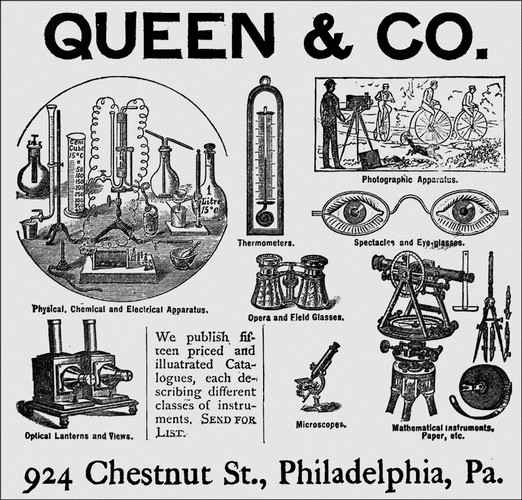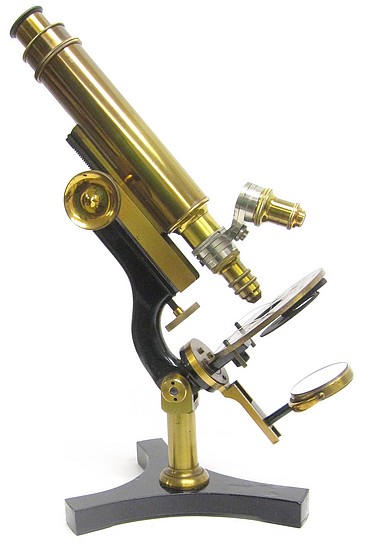
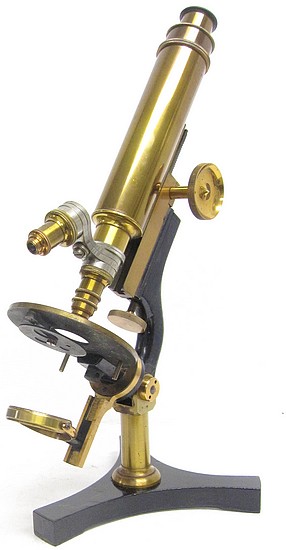
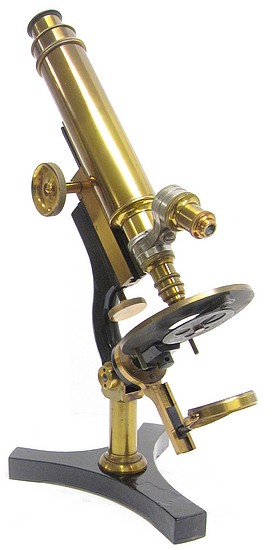
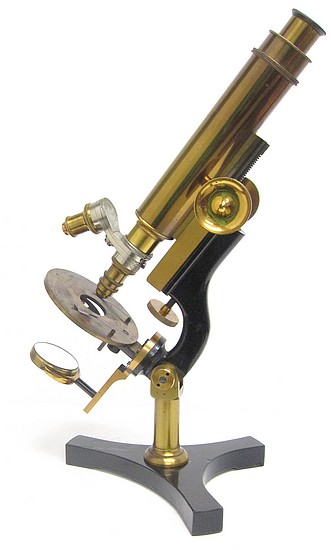
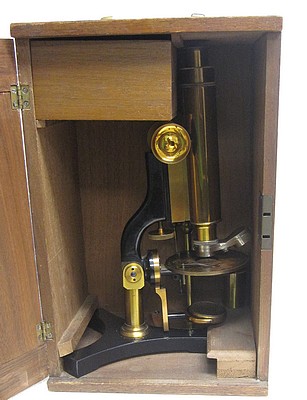
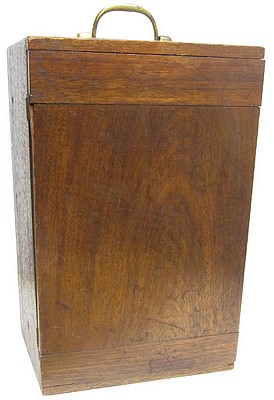
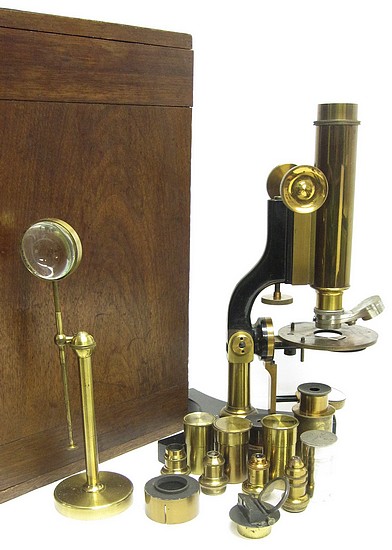
Accessories include 4 objectives ( 1/5, 1/2, 1, and 2-inch), double nosepiece, 2 oculars, camera lucida, screw-in substage apparatus holder, and a free-standing bullseye condenser.
Excerpt from the Pocket Catalogue of Microscopes, Magnifiers, Microscopical Accessories, Mounting Materials, etc., James W. Queen & Co., 1892.
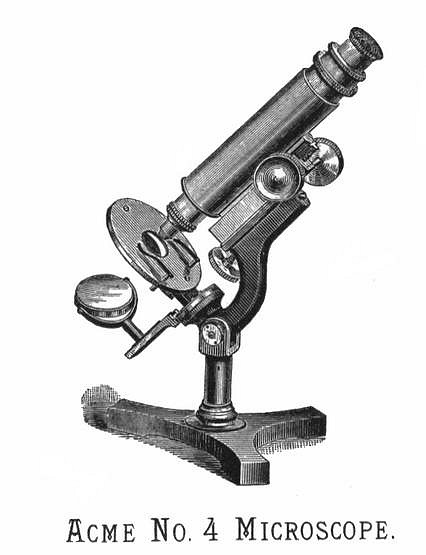
The ACME No. 4 MICROSCOPE
The Acme No. 4 is now such a standard and favorite instrument that but little description is necessary. It is easily manipulated, and is adequate to do work of a very high grade with lenses of the most extremely high power. The position of the fine adjustment, which was a " new departure," has been found to be one of great convenience; it is great delicacy and truth of motion in the axis and will focus a 1-20th objective, or higher, with perfect ease and exactness. Wear can readily be taken up.
The excellent features of this instrument enable us to recommend it especially for the use of physicians, as well as of students. We also recommend it to the attention of teachers of natural science in our high schools, etc., as an instrument well fitted for such work.
The body-tube is 6 1/2 inches long and may be increased, by means of the draw-tube, to the standard length of l0 inches, or over; it takes eye-pieces of 1 1/4 inches diameter, thus giving the advantage of a large field. The draw-tube has society-screw for attachment of amplifier, etc. The rack-and-pinion movement is of such steadiness and delicacy that a 1/5 inch objective may be easily and accurately focused. The mirrors, plane and concave, are mounted to slide (to or from the object) upon the radial mirror-bar, which turns about the object as a centre; for the illumination of opaque objects, the mirror may be thrown above the stage; when in a central (axial) position the mirror-bar is caught by a spring stop. The stage is circular, with a central aperture, into which screws the tube for carrying accessories, (such as polarizing apparatus and various other kinds of illuminating apparatus); and it is a stand worthy of receiving such additions.
The diaphragm for regulating the light is mounted upon a new plan which has the merit of great convenience; it is upon a hinged arm, which may be instantly swung completely aside, when oblique light is desired, or for the attachment of accessories. A spring stop brings each opening nicely central.
The spring-clips are made in such a way that under them the slide may be moved with perfect ease and smoothness. The eyes pieces have removable caps.
The Acme line of microscopes was first introduced in 1879 by the firm Sidle and Poalk of Philadelphia. The first microscope made by the firm was called "The Acme", an example of which with serial number 17 can be found on this website. By 1880, the firm was located in Lancaster Pennsylvania under the name John W. Sidle & Co. or the "Acme Optical Works". Subsequently, the entire output of the Acme factory was consigned to the retailer and manufacturer of scientific instruments, James W. Queen of Philadelphia. Several models of the Acme microscopes were produced numbered 2-6 (I have never seen an actual 1 or 2).
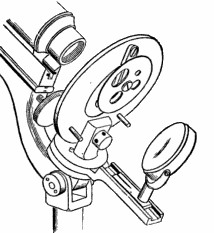
Elsewhere on this website are examples of the Acme models No. 3 and No. 5.
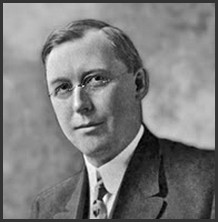
Dr. Edward E. Maxey (1867-1934)
This microscope was purchased from a member of the family of Dr. William Cannon Maxey, MD (1844-1912). Dr. Maxey graduated from the University of Tennessee in 1881. He was a veteran of the Civil War and a pioneer practitioner in Caldwell Idaho. He was active in local politics and later served as commandant of the Soldier's Home in Boise. In his will, he specifically left his Queen microscope to his son. Edward Ernest Maxey, MD (1867-1934). Edward was born in Irvington Illinois. He graduated from the College of Physicians and Surgeons in Chicago in 1891 and followed that with additional studies in several eastern states and abroad. Dr. Edward Maxey achieved some renown in that he was the first person to publish in 1899 a description of the disease known as Rocky Mountain Spotted Fever in an article entitled Some Observations on the so-called Spotted Fever of Idaho
Home-Antique Microscopes Site Index
email: wissnera@verizon.net
